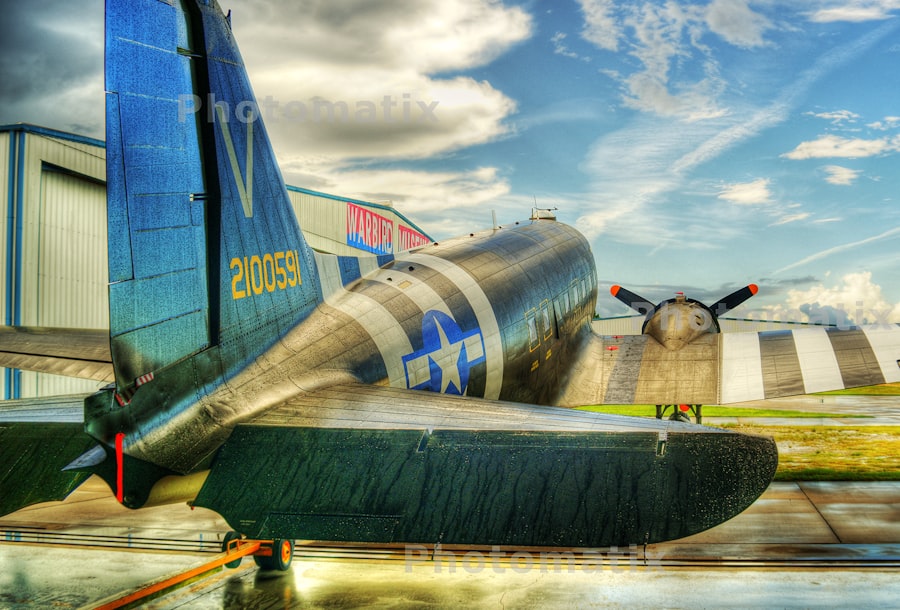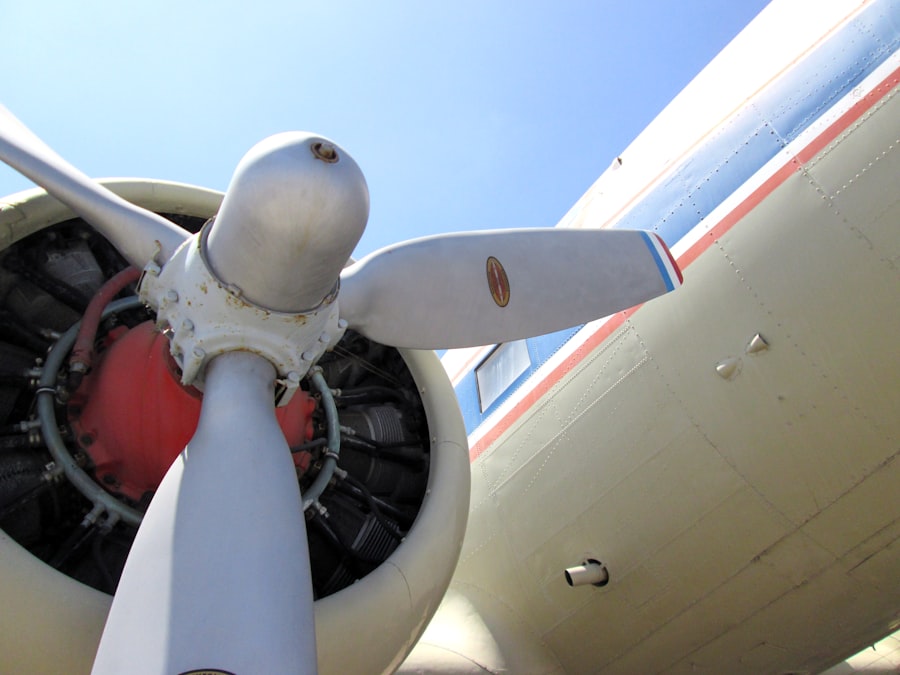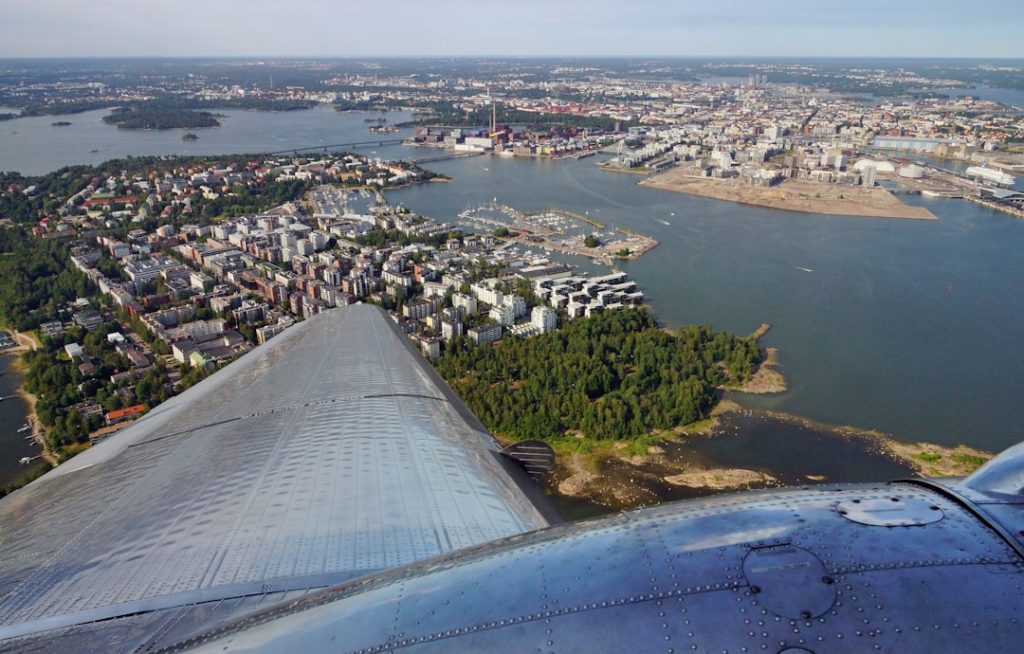The Douglas DC-3, a twin-engine propeller-driven aircraft, emerged as a revolutionary force in aviation history during the 1930s. Its inception can be traced back to the need for a reliable and efficient airliner that could cater to the burgeoning demand for commercial air travel. The aircraft was developed by the Douglas Aircraft Company, founded by Donald Wills Douglas in 1921.
The DC-3 was a direct evolution of the earlier DC-1 and DC-2 models, which had already made significant strides in passenger transport. The first flight of the DC-3 took place on December 17, 1935, coincidentally on the same day as the 32nd anniversary of the Wright brothers’ first powered flight. The DC-3 was initially designed as a commercial airliner, but its versatility quickly became apparent.
It was capable of carrying up to 32 passengers or a significant cargo load, making it an attractive option for airlines looking to maximize profitability. The aircraft’s introduction marked a turning point in air travel, as it offered a level of comfort and reliability that was previously unattainable. By the late 1930s, the DC-3 had become the backbone of many airlines, including American Airlines and United Airlines, and it played a crucial role in establishing air travel as a viable alternative to rail and sea transport.
Key Takeaways
- The DC 3 revolutionized air travel with its reliability and efficiency, becoming a symbol of the golden age of aviation.
- The DC 3 played a crucial role in shaping modern air transportation and paved the way for the development of larger, more advanced aircraft.
- With its innovative design and features, the DC 3 set new standards for comfort, safety, and performance in commercial aviation.
- The DC 3 has left a lasting impact on popular culture, appearing in films, literature, and art as a symbol of adventure and nostalgia.
- During World War II, the DC 3 served as a versatile and reliable military transport aircraft, playing a vital role in various operations and missions.
The Impact of the DC 3 on Aviation
The impact of the DC-3 on aviation cannot be overstated. It is often credited with transforming commercial air travel into a mainstream mode of transportation. Prior to its introduction, flying was often seen as a luxury reserved for the wealthy or adventurous.
The DC-3 changed this perception by providing a reliable and comfortable means of travel that appealed to a broader audience. Its ability to operate from shorter runways allowed airlines to serve smaller airports, thus expanding the reach of air travel to more remote regions. Moreover, the DC-3’s design and performance set new standards for aircraft in terms of speed, range, and passenger comfort.
With a cruising speed of around 190 miles per hour and a range of approximately 1,500 miles, it enabled airlines to connect distant cities in a fraction of the time it took by train or boat. This capability not only revolutionized passenger transport but also had significant implications for cargo transport, allowing businesses to ship goods more efficiently across vast distances. The DC-3’s influence extended beyond commercial aviation; it also laid the groundwork for future aircraft designs that prioritized efficiency and passenger experience.
The Design and Features of the DC 3

The design of the DC-3 is a testament to the engineering prowess of its time. It featured a sleek, aerodynamic fuselage that minimized drag and maximized fuel efficiency. The aircraft was powered by two Pratt & Whitney R-1830 Twin Wasp engines, each capable of producing 1,200 horsepower.
This powerful engine configuration allowed the DC-3 to achieve impressive performance metrics while maintaining operational reliability. The aircraft’s wingspan measured 95 feet, providing ample lift and stability during flight. One of the most notable features of the DC-3 was its spacious cabin layout.
Unlike many contemporary aircraft, which often prioritized maximum seating capacity over passenger comfort, the DC-3 offered a more generous seating arrangement. Passengers enjoyed wide aisles and comfortable seats, which contributed to an overall pleasant flying experience. Additionally, the aircraft was equipped with large windows that provided ample natural light and stunning views during flight.
The cabin’s design reflected a commitment to passenger comfort that would become a hallmark of commercial aviation.
The DC 3 in Popular Culture
| Popular Culture Reference | Description |
|---|---|
| Film | The DC-3 has appeared in numerous films, including “Casablanca” and “Indiana Jones and the Temple of Doom.” |
| Television | The DC-3 has been featured in TV shows such as “The Twilight Zone” and “The X-Files.” |
| Music | The DC-3 has been mentioned in songs by artists such as Johnny Cash and Tom Petty. |
| Literature | The DC-3 has been the subject of books and novels, including “The Dakota Hunter” by Hans Wiesman. |
The DC-3 has left an indelible mark on popular culture, appearing in numerous films, television shows, and literature over the decades. Its iconic silhouette is instantly recognizable, symbolizing an era when air travel began to capture the public’s imagination. One notable example is its prominent role in the classic film “Casablanca,” where it served as a backdrop for pivotal scenes involving romance and intrigue.
The aircraft’s presence in such films helped cement its status as an emblem of adventure and exploration. Beyond cinema, the DC-3 has also been featured in various documentaries and television programs that explore aviation history. Its legacy is often highlighted in discussions about the evolution of air travel and its impact on society.
Additionally, aviation enthusiasts frequently reference the DC-3 in literature, celebrating its engineering excellence and cultural significance. The aircraft has become more than just a mode of transportation; it represents a transformative period in human history when the world became more interconnected through flight.
The DC 3’s Role in World War II
During World War II, the DC-3 took on a new role as a military transport aircraft known as the C-47 Skytrain. Its adaptability made it an invaluable asset for Allied forces throughout the conflict. The C-47 was used extensively for troop transport, cargo delivery, and medical evacuation missions.
Its ability to operate from rough airstrips made it particularly useful in various theaters of war, including Europe and the Pacific. One of the most significant contributions of the C-47 was during the D-Day invasion of Normandy in June 1944. Thousands of paratroopers were transported into battle via C-47s, which dropped them behind enemy lines to secure key positions before the main invasion force arrived.
This operation demonstrated not only the aircraft’s capabilities but also its critical role in shaping military strategy during the war. By the end of World War II, thousands of C-47s had been produced, solidifying its status as one of the most successful military transport aircraft in history.
The Legacy of the DC 3

The legacy of the DC-3 is multifaceted, encompassing its contributions to both commercial aviation and military operations. Even decades after its initial introduction, the aircraft continues to be celebrated for its durability and versatility. Many DC-3s remain operational today, serving various roles from cargo transport to vintage airliner experiences for aviation enthusiasts.
This longevity speaks volumes about its design quality and engineering excellence. Furthermore, the DC-3 has inspired generations of aircraft designers and engineers who have sought to replicate its success in subsequent models. Its influence can be seen in modern airliners that prioritize efficiency, passenger comfort, and operational flexibility.
The principles established by the DC-3 have become foundational elements in aviation design philosophy, ensuring that its impact will be felt for years to come.
Restoring and Preserving the DC 3
As time passes, efforts to restore and preserve the DC-3 have gained momentum among aviation enthusiasts and historians alike. Various organizations and individuals are dedicated to maintaining these historic aircraft in flying condition or restoring them to their original specifications for display purposes. Restoration projects often involve meticulous attention to detail, ensuring that every aspect of the aircraft reflects its historical significance.
One notable example is the work done by organizations like the Historic Flight Foundation in Washington State, which has restored several DC-3s to their former glory. These restoration efforts not only preserve an important piece of aviation history but also provide opportunities for education and public engagement. By showcasing these aircraft at airshows and museums, enthusiasts can share their passion for aviation with new generations while honoring the legacy of this iconic aircraft.
The Future of the DC 3
Looking ahead, the future of the DC-3 appears promising despite its age. As interest in vintage aircraft continues to grow among aviation enthusiasts and collectors, there is a renewed appreciation for this classic model. Many operators are committed to keeping their DC-3s flying, participating in airshows and events that celebrate aviation history.
Moreover, advancements in technology may offer new opportunities for retrofitting these aircraft with modern avionics while preserving their historical integrity. This balance between modernization and preservation will be crucial in ensuring that future generations can experience the charm and significance of flying on a DC-3. As long as there are passionate individuals dedicated to maintaining this piece of aviation history, the legacy of the DC-3 will undoubtedly endure for years to come.


